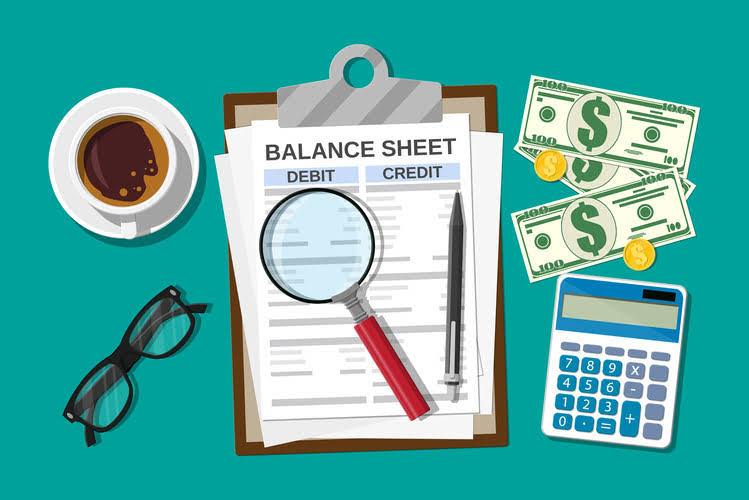
From an accounting standpoint, revenues and expenses are listed on the P&L statement when they are incurred, not when the money flows in or out. One beneficial aspect of the P&L statement, in particular, is that it uses operating and nonoperating revenues and expenses, as defined by the Internal Revenue Service (IRS) and GAAP. Journalizing is the process of recording transactions in a journal as journal entries. Posting is the process of transferring the all the transactions to the ledger.

Additional Resources
Also, it is the primary source for generating the company’s trial balance and financial statements. The ledger’s accuracy is validated by a trial balance, which confirms that the sum of all debit accounts is equal to the sum of all credit accounts. The balance sheet reports the assets, liabilities, and shareholder equity at a specific point in time, while a P&L statement summarizes a company’s revenues, costs, and expenses during a specific period.
Supercharge your skills with Premium Templates
The balance sheet displays what a company owns (assets) and owes (liabilities), as well as long-term investments. Investors scrutinize the balance sheet for indications of the effectiveness of management in utilizing debt and assets to generate revenue that gets carried over to the income statement. The income statement, often called the profit and loss statement, shows the revenues, costs, and expenses over a period which is typically a fiscal quarter or a fiscal year.
How Do You Write an Accounting Ledger?

The balance sheet shows a company’s resources or assets and how those assets are financed—whether through debt under liabilities or by issuing equity, as shown in the shareholder equity section. A ledger account is a record of all transactions affecting a particular account within the general ledger. This software ensures the general ledger will sort all transactions through the proper accounts to create accurate financial records. With QuickBooks for Small Businesses you can connect all of your business accounts seamlessly and track all expenses in one place. To get the most out of your general ledger (and all other reports), set up the company’s structure properly. Hire an accountant or bookkeeper, or learn how to set up the chart of accounts and classifications for your company’s accounting system.
- From there, gross profit is impacted by other operating expenses and income, depending on the nature of the business, to reach net income at the bottom — “the bottom line” for the business.
- Bookkeepers primarily record transactions in a journal, also known as the original book of entry.
- To best analyze the key areas of the balance sheet and what they tell us as investors, we’ll look at an example.
- The balance sheet, on the other hand, is a financial statement distributed to other departments, investors, and lenders.
In contrast, the balance sheet aggregates multiple accounts, summing up the number of assets, liabilities, and shareholder equity in the accounting records at a specific time. The balance sheet includes outstanding expenses, accrued income, and the value of the closing stock, whereas the trial balance does not. Preparing a ledger https://www.bookstime.com/ is vital because it serves as a master document for all your financial transactions. Since it reports revenue and expenses in real-time, it can help you stay on top of your spending. The general ledger also enables you to compile a trial balance and helps you spot unusual transactions and create financial statements.
The balance sheet and the profit and loss (P&L) statements are two of the financial statements companies regularly issue. Such statements provide an ongoing record of a company’s financial condition and are used by creditors, market analysts, and investors to evaluate a company’s financial soundness and growth potential. Every accounting period, these entries and account listings are compiled into the essential financial statements of a business, including which accounts are found on an income statement the balance sheet and income statement. It is these documents that reflect the overall financial position of a company. Such information is used internally and externally to measure the success of a business and ensure that all dealings meet governing body regulations. The transactions are then closed out or summarized in the general ledger, and the accountant generates a trial balance, which serves as a report of each ledger account’s balance.

The Financial Modeling Certification
As a small business owner, you need to be aware of all the transactions your business has completed in an accounting period. Income statement ledger accounts are maintained in respect of incomes and expenditures. A subsidiary ledger (sub-ledger) is a sub-account related to a GL account that traces the transactions corresponding to a specific company, purchase, property, etc.
- The cost of sales is subtracted from that sum to yield the gross profit for that reporting period.
- The income statement, often called the profit and loss statement, shows the revenues, costs, and expenses over a period which is typically a fiscal quarter or a fiscal year.
- The general ledger also helps you compile a trial balance, spot unusual transactions, and create financial statements.
- In order to simplify the audit of accounting records or the analysis of records by internal stakeholders, subsidiary ledgers can be created.
- Transactions from subsidiary ledgers are periodically summarized and transferred to the general ledger, which contains transaction data for all accounts in the chart of accounts.
- Also, it is the primary source for generating the company’s trial balance and financial statements.
Summary Comparison of the Three Financial Statements
The balance sheet shows how much a company is actually worth, meaning its total value. Though both of these are a little oversimplified, this is often how the P&L statement and the balance sheet tend to be interpreted by investors and lenders. Unlike an income statement, the full value of long-term investments or debts appears on the balance sheet.
